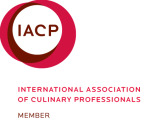The third chapter of Chocolate 201 focused on Amano Chocolate and featured a fabulous bonus of a scotch tasting from the always lovely Marcus von Albrecht. I’ll get to the scotch soon enough. This is, after all, The Well-Tempered Chocolatier and not The Well-Sozzled Scotch Drinker.
Though, truth be told, I have been known to get well-sozzled with scotch.
Amano Artisan Chocolate is based out of Orem, Utah. Of the small producers highlighted in Chocolate 201, Amano is probably the one with the widest distribution, especially considering a recent expansion into select Starbucks locations in the US. It’s an interesting move, and one that most are watching closely. Will it dilute the brand, or will it provide a gateway for more people to access real chocolate? Time will tell.
Regardless, Amano is the darling of North American chocolate, and has received numerous chocolate awards.
Amano Ocumare 70%, Montanya 70% and Cuyaga 70%
We started with a tasting of these three bars, each made with beans from a different region of Venezuela. People always ask me if there are characteristic flavours of chocolate from a particular region. Madagascan chocolate is known for its red fruit and brightness, but that doesn’t mean that all chocolate from Madagascar tastes like that. Nor does it mean that a chocolate from somewhere else can’t have those flavours.
So these three chocolates are all from different regions in Venezuela, and they all taste quite different.
The Ocumare is usually one of my favourites, with notes of plum and smokiness, but I’ll admit that the bar we tasted in class was more subtle than I’m used to. The plum came through as raisin, rather than plum. On the whole, the brightness that I associate with this bar just wasn’t there. It’s still nice, but not as evocative of warm summer afternoons as previous bars have been.
Next, we tried the limited edition Montanya. This bar comes from a mountainous region of Venezuela and was far more assertive than the Ocumare. Some in the class thought it had to do with the cacao trees having to deal with mountainous conditions. Interesting thought, but I don’t know enough to say for sure. This bar was bright and bold with notes of flowers, nuts and hops. I think it was the crowd-pleaser of the night, as I noticed more than a few people walking out with this bar in their hands.
Note: as the Montanya is a limited edition, you should probably get your fix now. As with anything that’s limited edition, when it’s gone—it’s gone.
We rounded out the Venezuela bars with the Cuyaga, also a limited edition bar. And, sadly, this one is sold out. It’s more subtle than the Montanya, and has floral notes with hints of grass and smoke.
Amano Guayas 70%
This bar is from Ecuador. In last week’s class, we talked a bit about Ecuadorian chocolate. I still haven’t decided whether I’m not a fan of Ecuadorian beans, or if no one out there makes an Ecuadorian bar that I like. I trust that Art Pollard, the man behind Amano Chocolate, knows what he’s doing, so it appears that I just don’t like Ecuadorian beans. This one had vague notes of tropical fruit, and was described by one of the participants as “between bark and spice.” Now, that sounds weird until you think about something like cinnamon, which is decidedly spicy but also a bit woody.
Amano Jembrana 70% and Jembrana milk
Amano is one of the few companies who makes milk chocolate. Milk chocolate gets a bad rap. I’ve seen people turn up their noses at it and sniff derisively, but there’s some really lovely milk chocolate out there. For example, the Theo Chocolate Jane Goodall milk bar is one of my favourites. Given the complexity that comes with adding an extra ingredient—milk powder—I actually think that milk chocolate might be harder to make than dark chocolate. Good milk chocolate, that is. Not that cloying, chalky stuff.
The Jembrana bar is apparently the only bar to exclusively feature beans from Bali—as opposed to other Indonesian chocolate which consists of beans from Bali mixed with beans from Java.
We did a tasting of the Jembrana dark and milk bars. The dark has floral notes along with some smoke and spice; and while I picked up a decided anise flavour to it, others didn’t. The milk tasted surprisingly different, given that it’s the same bar but with milk powder. The floral notes were muted, replaced with more butterscotch and spice.
Amano Madagascar 70%
We tried two batches of this bar. The older batch was everything you’d expect from a Madagascan bar: bright, with red fruit, nice acidity and a hint of citrus. In contrast, the newer batch seemed a bit muted and less bright. I’m not sure if this is an issue with batch variation or if they’re playing with recipes, but there you go.
Amano Dos Rios 70%
This is one of the most distinctive bars on the market, and I’d go as far as to say that I’ve never tasted anything else like it. I first tried this at the Seattle Luxury Chocolate Salon last year, and while Art was very proud of it, he was also super secretive. A few months later, when someone mentioned they had tried a chocolate that tasted like bergamot, I knew it had to be this one.
It smells of bergamot (that’s the scent of Earl Grey, for those of you who haven’t had the pleasure of being in California or Italy in January) and tastes like bergamot, orange and cloves. It’s shocking, actually, how distinctive it tastes. I love giving this to people and watching their faces as they taste it. Some are quick to pinpoint the bergamot, while others need a bit of pushing. Mentioning Earl Grey tea usually does it.
Scotch…and scotch-induced observations
We finished the session with a scotch tasting led by Marcus von Albrecht, who surprised me by not doing a tasting of only scotches from Islay. I’d provide more details, but, well, it was a scotch tasting and I seem to have lost my notes.
After the class, one of the participants bought a Pralus Tanzania bar, which surprised me. We did a Pralus tasting last week, when I described the Tanzania bar as being dangerously close to burnt, as opposed to toasty. And, the whole time that I’ve been teaching this class I’ve been mentioning that each chocolatemaker makes chocolate to suit his (or her, but mostly his) palate. I’m not sure why, but it took me a while to realize that I’ve also been teaching the class according to my palate. I gravitate toward bright, fruity, floral chocolates. It’ll be interesting when we focus on Claudio Corallo next week, whose chocolate is decidedly earthy, nutty and brooding—and, incidentally, one of my absolute favourites. A woman of contradictions, I am.



Pingback: Chocolate 201: Recap « The Well-Tempered Chocolatier